Australian Indigenous languages
Bridging the Gap: Effective Strategies for Advising on Indigenous Language Policies
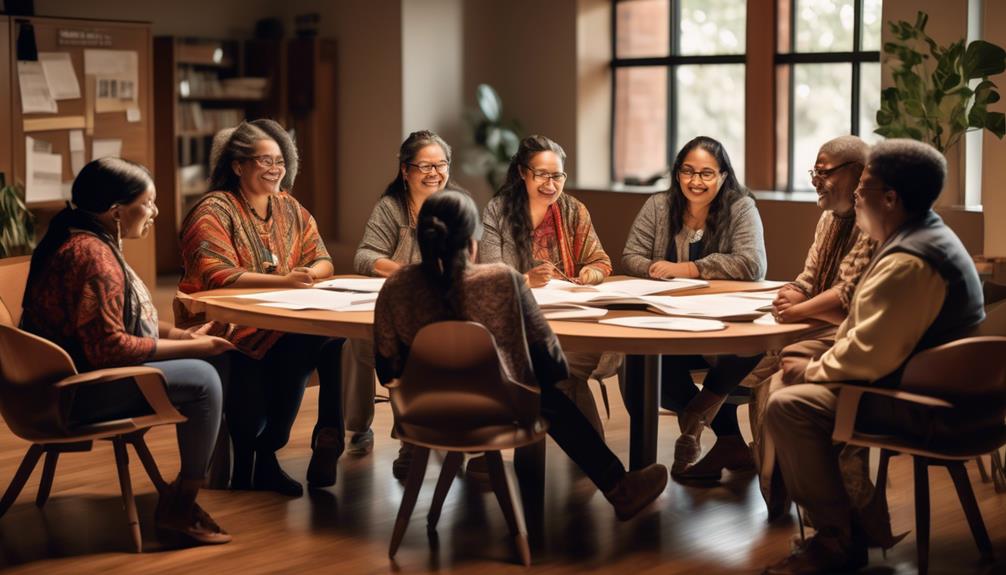
At the University of Minnesota, work is being done to develop effective methods for advising on policies related to Indigenous languages. This effort is especially important considering the variety of languages within Indigenous communities and the obstacles they encounter in maintaining and advancing their languages.
As we explore the intricate dynamics of Indigenous language policies, we will uncover the multifaceted aspects of cultural significance, legal frameworks, educational support, and community engagement. The complexities of this endeavor are not only intellectually stimulating but also hold the key to fostering inclusivity and empowerment within Indigenous communities.
Key Takeaways
- Recognize the deep-rooted values and historical importance of cultural practices within Indigenous communities.
- Understand international, national, and regional laws impacting Indigenous language rights.
- Tailor resources for Indigenous students in linguistics to address their specific needs.
- Prioritize cultural appropriateness in all community engagement strategies.
Understanding Cultural Significance
Understanding the cultural significance of Indigenous languages and traditions is essential for promoting respect and preserving heritage. It isn't merely about recognizing the surface-level meanings; rather, it involves delving into the deep-rooted values and historical importance of cultural practices within Indigenous communities.
This holistic approach encompasses not only language but also the interconnectedness of land, spirituality, and identity. By actively listening to and learning from Indigenous elders, knowledge keepers, and community members, we can gain a profound understanding of the cultural values and traditions that have sustained Indigenous cultures for generations.
Embracing cultural significance also means upholding traditional protocols, ceremonies, and oral histories, acknowledging their vital role in preserving Indigenous knowledge and wisdom. Language revitalization can't be achieved without a genuine recognition of the cultural significance of Indigenous languages and the rich tapestry of traditions they embody.
Navigating Legal Frameworks
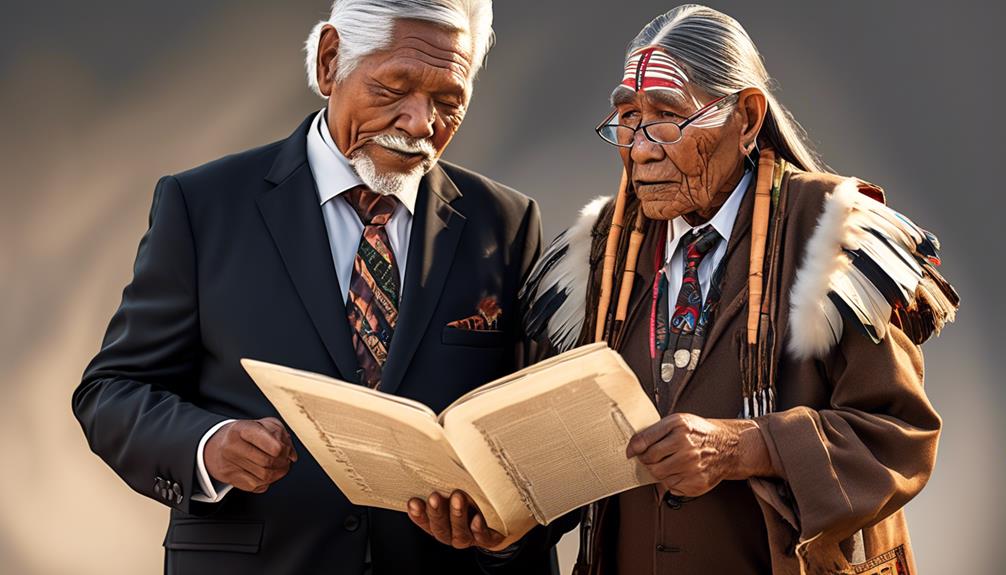
Navigating legal frameworks related to Indigenous languages is crucial for effectively advocating and implementing policies that uphold language rights. Understanding international, national, and regional laws impacting Indigenous language rights is essential. Legal frameworks may include legislation, treaties, and court decisions recognizing and protecting Indigenous languages.
To navigate these frameworks effectively, it's important to consider legal precedents, jurisdictional complexities, and government responsibilities. Collaboration with legal experts, Indigenous communities, and advocacy organizations is key to developing effective strategies. By working closely with Indigenous community leaders, early intervention can be implemented to ensure culturally sensitive and sustainable solutions.
It's vital to incorporate Indigenous perspectives in legal discussions and actively involve Indigenous students in the process. Recognizing Indigenous lands and respecting their sovereignty is fundamental. Additionally, aligning policies with the United Nations' declarations on Indigenous rights is crucial.
Ultimately, our goal is to navigate legal frameworks in a way that supports Indigenous Education and protects the linguistic heritage of Indigenous communities.
Educational Support and Advocacy
Pivoting from our discussion on navigating legal frameworks, our focus now shifts to the crucial topic of providing educational support and advocacy for Indigenous students in linguistics. The need for tailored support for Indigenous students in linguistics is evident, and it's heartening to see institutions like the University of Minnesota taking proactive steps to address this. As we delve into educational support and advocacy, it's essential to recognize the progress being made and the opportunities for further advancement.
| Challenges Faced by Indigenous Students | Advocacy and Support Initiatives |
|---|---|
| Limited access to culturally relevant resources | Development of tailored resources for Indigenous students |
| Underrepresentation in linguistic programs | Advocacy for increased representation and support from academic institutions |
| Navigational challenges in academia | Mentorship programs and support networks for Indigenous students |
Education and support for Indigenous populations in linguistics are crucial not only in the United States but also in other countries with Indigenous peoples, such as New Zealand. We must continue to listen to Indigenous leaders and advocate for policies and initiatives that support their educational pursuits in linguistics. By doing so, we can contribute to a more inclusive and supportive academic environment for Indigenous students.
Community Engagement Strategies

Engaging with Indigenous communities through collaborative resource development and initiatives is essential for promoting linguistic inclusivity and cultural understanding. To effectively engage with Indigenous communities, it's crucial to prioritize cultural appropriateness in all community engagement strategies.
This involves recognizing and respecting the unique cultural norms, traditions, and values of the community members. Additionally, bridging language barriers is vital, and this can be achieved by utilizing technological solutions and providing resources for language interpretation.
Seeking to understand and address the unique challenges faced by Indigenous communities in different contexts is fundamental for building trust and fostering collaboration. Understanding the specific health-related needs of the community members and working towards enhancing access to health resources can significantly contribute to improved outcomes for Indigenous individuals.
Professional development opportunities that are tailored to meet the needs of the community and involve collaboration with Indigenous leaders can also play a crucial role in building effective community engagement strategies.
Resources for Preservation and Promotion
In our efforts to promote linguistic inclusivity and cultural understanding, it's crucial to provide tailored resources for Indigenous students, addressing the challenges they face in navigating linguistics and academia.
Indigenous graduate student enrollments in the College of Liberal Arts have seen a significant 37% increase in the last decade, with a considerable number of Indigenous students in the Linguistics graduate program at the University of Minnesota.
Despite this progress, Indigenous students have historically been excluded and underrepresented in the field of linguistics.
To address this, a team primarily comprising Indigenous MA and PhD students has developed resources specifically tailored to the needs of Indigenous students.
These resources aim to bridge the gap by providing expert advice and support, allowing Indigenous students to access a quality education in linguistics.
Furthermore, these resources also focus on preserving and promoting Indigenous languages, which are a vital part of the social and cultural body of knowledge.
This is especially important as many Indigenous communities reside in remote areas, where access to linguistic and educational resources may be limited.
Frequently Asked Questions
What Is an Example of Language Revitalization?
Language revitalization efforts often involve community engagement through language immersion programs, preserving cultural traditions and storytelling.
Government support is crucial for educational programs that promote linguistic diversity and oral history.
Traditional ceremonies and intergenerational learning also play a key role in revitalizing Indigenous languages.
Additionally, technological innovation can aid in language documentation and community involvement, contributing to the preservation and revitalization of Indigenous languages.
In What Ways Does the Loss of Indigenous Languages Signify a Loss of Knowledge and Cultural Diversity?
The loss of indigenous languages signifies a loss of knowledge and cultural diversity in various ways. Cultural preservation and knowledge transmission suffer, impacting language revitalization and community involvement.
Linguistic diversity and endangered languages reflect the erosion of oral traditions and historical significance. Intergenerational transmission and language loss hinder indigenous knowledge and perpetuate linguistic colonization.
Cultural identity and language maintenance struggle, affecting educational impact and linguistic heritage. Colonialism's impact on indigenous language rights exacerbates these challenges.
What Are the Three Main Products Output of a Language Documentation Project?
We produce a language grammar, a dictionary, and a collection of texts in the language. These products are vital for language preservation and community engagement.
Our documentation methods and data analysis contribute to cultural significance and linguistic heritage.
Collaborative research and intergenerational transmission help maintain linguistic diversity and oral traditions.
Technology integration ensures language sustainability, while ethnolinguistic mapping and community empowerment support indigenous knowledge and language policy.
These educational resources aid in language revitalization.
What Ideology Does Linguistic Purism Defend?
Linguistic purism defends the ideology of linguistic preservation and language purity, emphasizing historical preservation and cultural authenticity. It opposes language evolution, advocating for maintaining linguistic heritage and cultural identity.
This ideology aims to resist linguistic diversity and foreign influences, promoting the standardized, 'correct' form of language. It's rooted in the belief that preserving language purity is essential for maintaining cultural authenticity and identity.
Conclusion
As we navigate the complex landscape of Indigenous language policies, we must understand the cultural significance while also navigating legal frameworks.
By providing educational support and advocacy, engaging with communities, and promoting resources for preservation, we can bridge the gap and support Indigenous language revitalization.
It's a challenging journey, but with dedication and collaboration, we can make a meaningful impact and ensure the rich tapestry of Indigenous languages continues to thrive for future generations.
Talise is a talented writer and an expert in her field. Her unique perspective and insights enrich our content with depth and authenticity. With a wealth of knowledge and a strong connection to the subjects she writes about, Talise crafts engaging and informative articles that resonate with our readers. Her dedication to bringing Indigenous culture and wisdom to light is truly commendable.
Australian Indigenous languages
Cultivating Expertise in Indigenous Languages: The Importance of Specialized Training Programs
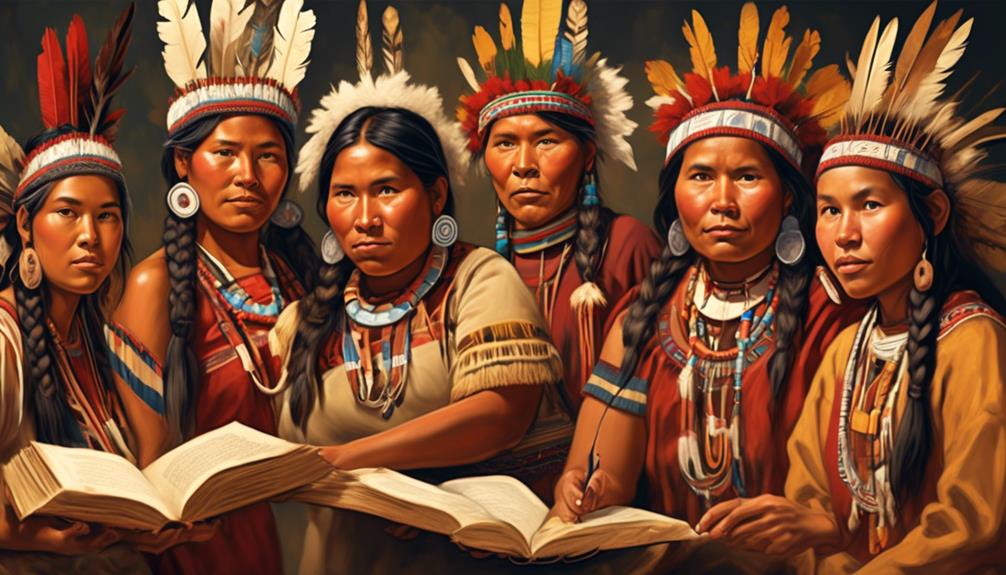
Specialized training programs act like the fertile ground that lets the mastery of Indigenous languages sprout and bloom. They’re crucial for giving people the tools and know-how to teach and safeguard these languages.
However, amidst the challenges and complexities of this endeavor, the question remains: How do these specialized training programs truly impact the preservation and revitalization of Indigenous languages, and what do they mean for the future of cultural heritage?
Key Takeaways
- Indigenous languages hold profound knowledge specific to a land and ecosystem.
- Fluent language speakers play a crucial role in language revitalization.
- Specialized training programs equip individuals with the necessary skills.
- Language immersion and authentic cultural contexts are essential for learning.
The Significance of Indigenous Language Expertise
Unfortunately, the significance of Indigenous language expertise is often overlooked in discussions about cultural preservation and ecological sustainability.
Indigenous languages hold profound knowledge specific to a land and ecosystem, encompassing ancestral wisdom and ecological knowledge.
The importance of Indigenous language expertise lies in its integral role in preserving cultural heritage and ecological sustainability within Indigenous communities. Fluent language speakers play a crucial role in language revitalization, as they hold the key to passing on this knowledge to future generations.
Language education programs should focus on empowering Indigenous communities to preserve and revitalize their languages, ensuring that language materials are culturally relevant and accessible.
It's essential to recognize the importance of Indigenous language expertise in promoting holistic well-being within Indigenous communities, as language and cultural practices are deeply intertwined.
Therefore, specialized training programs for Indigenous languages are imperative in equipping individuals with the necessary skills to contribute to the preservation and revitalization of Indigenous languages.
Ultimately, acknowledging and nurturing Indigenous language expertise is fundamental to fostering sustainable cultural preservation and ecological harmony.
Challenges in Specialized Language Training
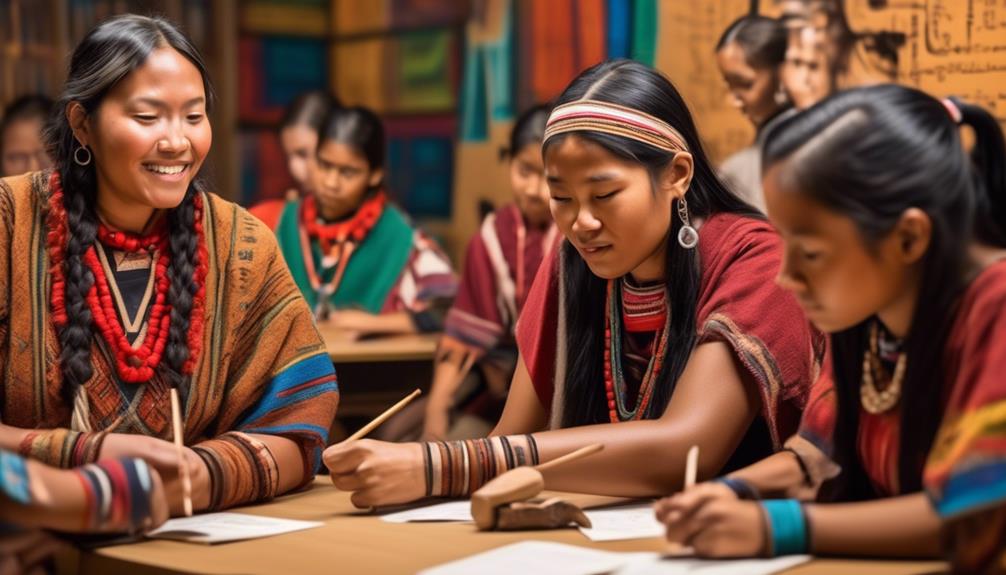
Given the significance of Indigenous language expertise in preserving cultural heritage and ecological sustainability, we now confront the challenges inherent in specialized language training. As we strive to support the revitalization of Indigenous languages, several obstacles hinder our efforts to cultivate proficient speakers and promote the transmission of cultural values through language.
These challenges include:
- Limited Funding: Access to sufficient government funding for full immersion programs is a critical challenge in specialized language training, as financial resources are essential for the success of language revitalization initiatives.
- Financial Barriers: Individuals often face financial barriers that prevent them from participating in specialized language training programs, inhibiting the growth of fluent speakers within Indigenous communities.
- Cultural Translation: The loss of Indigenous worldviews and ideas in translation to English poses a substantial challenge in specialized language training, requiring innovative approaches to convey cultural nuances accurately.
- Inter-generational Trauma: Addressing legacies of trauma linked to colonization in language reclamation presents a significant challenge in specialized language training, as historical injustices continue to impact the well-being of Indigenous community members.
Navigating these challenges demands a collaborative and empathetic approach to effectively address the complexities of specialized language training and empower Indigenous communities in preserving their Native Languages.
Impact on Language Preservation
Preserving indigenous languages serves as an essential conduit for transmitting ancestral wisdom and ecological knowledge across generations. The impact of specialized training programs on language preservation is profound. By equipping individuals with expertise in indigenous languages, these programs directly contribute to the preservation of cultural heritage and the safeguarding of traditional ecological knowledge.
As indigenous languages are integral to governance, teachings, and worldviews within Indigenous communities, the loss of these languages poses a significant threat to the continuity of cultural traditions and intergenerational communication. The future generations stand to lose vital connections to their heritage if steps aren't taken to preserve and revitalize indigenous languages.
Moreover, the establishment of specialized training programs demonstrates a commitment to addressing the challenges of language loss posed by globalization and the lack of institutional support. Education and collaboration within communities are essential for the revitalization and preservation of indigenous languages. Therefore, the impact of these programs extends beyond individuals to the broader community, contributing to the collective effort of preserving and promoting linguistic diversity and cultural richness.
Cultural Competency in Language Programs
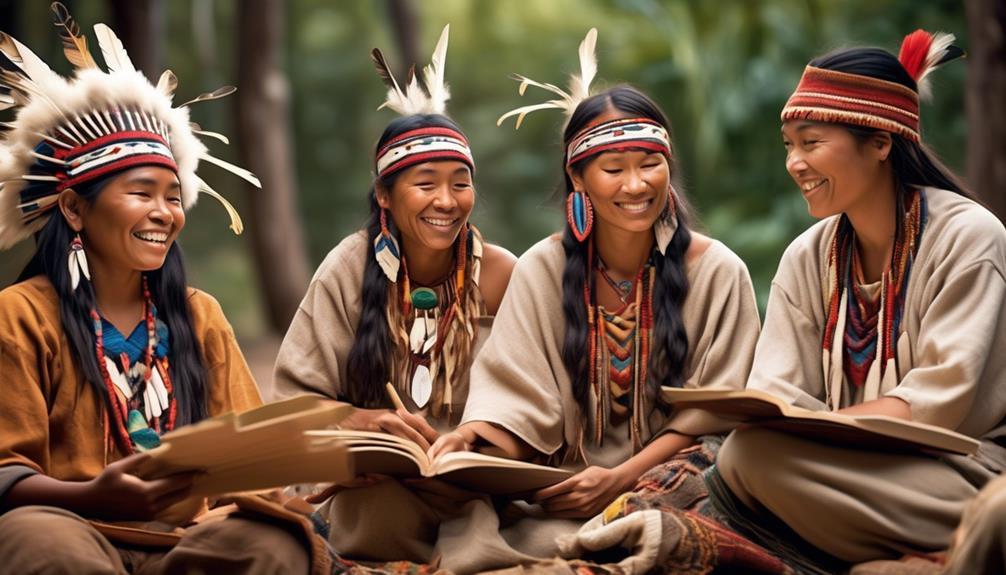
In our language programs, we prioritize cultural competency by emphasizing the understanding and respect for the cultural context in which the language is spoken. It's essential for us to recognize the diverse cultural backgrounds and worldviews of language learners. By acknowledging the historical and social context of the language and its speakers, we can create a more inclusive and effective learning environment.
Training in cultural competency for language programs involves developing sensitivity to cultural nuances and communication styles, ensuring that we can effectively connect with and support our students. Understanding cultural competency also includes valuing and incorporating indigenous knowledge and ways of knowing, which is crucial for the preservation and revitalization of endangered indigenous languages.
Future of Indigenous Language Training
As we look to the future of indigenous language training, it's imperative to continue prioritizing cultural competency by emphasizing immersive learning and the preservation of indigenous knowledge and ways of knowing.
Specialized training programs play a crucial role in cultivating expertise in indigenous languages. These programs should focus on language immersion, providing learners with opportunities to engage with the language in authentic cultural contexts.
It's essential to support existing proficient speakers in teaching the language to future generations, as they hold valuable knowledge about indigenous cultures and languages.
Additionally, increased funding for indigenous nations and communities is necessary to ensure culturally responsive education that incorporates relevant research and resources.
Collaboration with elders and fluent speakers is key for successful indigenous language revitalization, as it allows for the transmission of cultural nuances and traditional practices.
Emphasizing the importance of specialized training programs that align with the cultural values and linguistic nuances of Indigenous languages and cultures is crucial for the future of indigenous language training.
Frequently Asked Questions
Why Is It Important to Teach and Learn Indigenous Languages?
Preserving indigenous languages is vital for sustaining culture, connection, and heritage. Revitalizing these languages empowers communities, fostering resilience and tradition.
Education in indigenous languages promotes understanding, empathy, and history. It also enriches linguistic diversity and sustains knowledge.
Our commitment to teaching and learning indigenous languages reflects our dedication to preserving cultural identity and promoting sustainability.
Why Is It Important to Maintain Indigenous Languages?
Maintaining indigenous languages is crucial for preserving culture, empowering communities, and fostering linguistic diversity. It plays a vital role in preserving historical significance and promoting community cohesion.
Language revitalization also contributes to educational benefits and intergenerational transmission, instilling indigenous pride and cultural identity. Without it, we risk losing essential elements of heritage.
Embracing and nurturing indigenous languages is fundamental in honoring and cherishing the rich tapestry of our world's linguistic traditions.
Why Is Learning Native Language Important?
Learning our native language is important for preservation of our culture, identity, and heritage. It strengthens communication, tradition, and revitalization of our community.
It connects us to our history, empowers resilience, and fosters education and understanding. Our language is crucial for self-determination and sovereignty.
It promotes inclusion and diversity, enabling us to express ourselves authentically. Ultimately, it's a powerful tool for preserving and celebrating our unique cultural heritage.
What Is the Importance of Indigenous Knowledge?
Preserving indigenous knowledge is crucial for preserving culture, empowering communities, and strengthening identity. It promotes diversity, builds connections, and enhances communication, upholding traditions and fostering understanding.
It's about honoring heritage and respecting knowledge. By embracing indigenous knowledge, we celebrate the richness of our collective human experience and ensure that valuable wisdom is passed down to future generations.
Conclusion
In conclusion, specialized training programs are the key to preserving Indigenous languages for future generations.
These programs not only equip educators with the necessary skills, but also foster a sense of community and collaboration.
Just as seeds need the right conditions to grow, Indigenous languages need the support and expertise that specialized training provides in order to flourish and thrive.
With continued investment in these programs, we can ensure the longevity and richness of Indigenous languages and cultures.
Mary is a passionate writer who brings creativity and a fresh perspective to our team. Her words have the power to captivate and inspire, making her an essential contributor to our content. Mary’s commitment to storytelling and dedication to promoting Indigenous culture ensures that her work touches the hearts of our readers. We’re fortunate to have her as part of our team.
Australian Indigenous languages
Empowering the Next Generation: Training Programs for Indigenous Language Specialists

It’s widely recognized that an alarming 40% of the globe’s 7,000 languages are in danger of extinction, most of which are Indigenous languages. The need to safeguard and rejuvenate these precious linguistic resources is more pressing than ever.
As we explore the impact of training programs for Indigenous language specialists, we'll uncover how these initiatives play a pivotal role in not only safeguarding endangered languages but also in empowering Indigenous communities to reclaim and celebrate their cultural identities.
The ripple effects of these programs extend far beyond linguistic preservation, and the results are truly transformative.
Key Takeaways
- Indigenous language preservation is important for safeguarding cultural heritage and traditional knowledge, fostering community cohesion, promoting self-expression, and maintaining a rich tapestry of traditions and values.
- Training programs for indigenous language specialists should emphasize integrated language skills, incorporate cultural heritage preservation, encourage community engagement and collaboration, and integrate modern technology while being tailored to meet linguistic and cultural needs.
- Mentorship and community engagement are crucial for ensuring language continuity, transmitting traditional knowledge, safeguarding against forced assimilation, empowering individuals in language preservation, and strengthening bonds of cultural heritage.
- Opportunities for language documentation, such as collaborative efforts in documenting endangered languages, development of dictionaries and educational materials, preservation of cultural heritage and oral traditions, and support for language revitalization efforts, can foster unity, shared purpose, and the preservation of rich cultural heritage and traditional knowledge.
Importance of Indigenous Language Preservation
Preserving Indigenous languages is crucial for safeguarding cultural heritage and traditional knowledge, fostering community cohesion, and promoting self-expression. Language is the cornerstone of cultural identity, and the preservation of Indigenous languages is essential for maintaining the rich tapestry of traditions and values within Indigenous communities.
It serves as a means of passing down traditional knowledge from one generation to the next, creating a strong sense of continuity and connection to the past. Language revitalization efforts not only preserve linguistic diversity but also contribute to the overall well-being of Indigenous communities by instilling a sense of pride and belonging.
Furthermore, the act of language learning itself becomes a powerful tool for healing and rebuilding what was lost due to historical colonization. By recognizing the importance of preserving Indigenous languages, we honor the resilience and strength of Indigenous peoples, while also acknowledging the fundamental human right to linguistic diversity.
It's through the preservation of Indigenous languages that we truly uphold the cultural heritage and traditions that have been passed down through generations.
Training Program Curriculum Overview
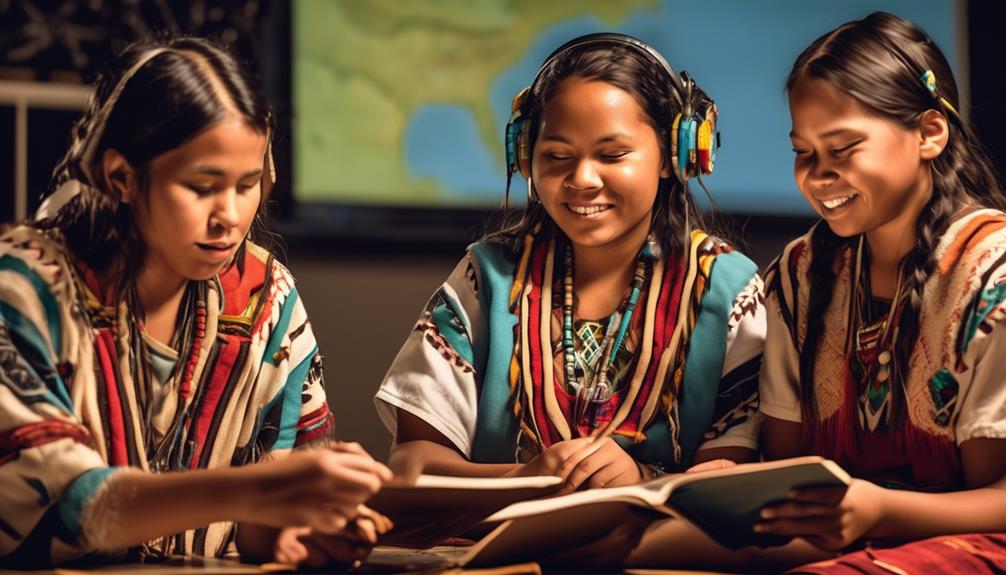
The curriculum for training programs for Indigenous language specialists is designed to equip them with the necessary skills and knowledge for language preservation, documentation, and revitalization techniques. Our program is specifically tailored to meet the unique linguistic and cultural needs of indigenous communities.
Here's an overview of our curriculum:
- Integrated Language Skills: Our training program emphasizes the development of language skills, including phonetics, grammar, and vocabulary, necessary for effectively preserving Indigenous languages.
- Cultural Heritage Preservation: We incorporate traditional teaching methods and cultural practices to ensure the preservation of traditional cultural knowledge and practices, empowering indigenous communities to maintain their linguistic and cultural heritage.
- Community Engagement and Collaboration: We place a strong emphasis on community engagement, encouraging collaboration with indigenous communities to ensure that the revitalization efforts align with their cultural values and needs.
Our curriculum integrates modern technology to support language preservation efforts, providing our language specialists with the tools and knowledge needed to make a meaningful impact in their communities.
Mentorship and Community Engagement
Our training program's emphasis on community engagement and collaboration aligns with our commitment to empowering indigenous communities in their language preservation and revitalization efforts.
Mentorship is crucial for the transmission of indigenous languages and cultural knowledge. By building strong mentorship programs within the indigenous community, we foster language continuity and ensure that traditional knowledge is passed down to the next generation. Through mentorship, indigenous language specialists can play a vital role in preserving native languages and cultures, safeguarding them against the historical impact of forced assimilation and human rights violations.
Community engagement initiatives provide essential support, resources, and opportunities for language learners and enthusiasts, creating a supportive environment for language preservation and revitalization. Collaborative efforts within the indigenous community not only strengthen the bonds of cultural heritage but also empower individuals to take an active role in preserving their native language.
Our program recognizes the significance of mentorship and community engagement in ensuring the enduring legacy of indigenous languages and cultures.
Opportunities for Language Documentation
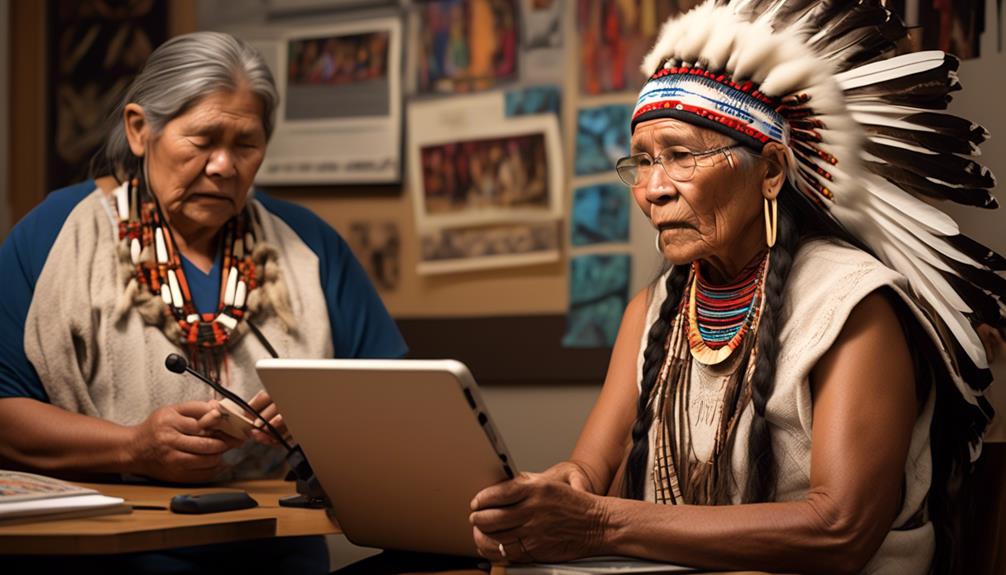
Language documentation provides valuable opportunities for recording and preserving endangered languages for the benefit of future generations. This process allows us to systematically collect and analyze linguistic data, creating vital resources for language revitalization efforts. Through language documentation, communities can archive their oral traditions, stories, and cultural practices, ensuring their preservation and passing them down to future generations. This not only strengthens indigenous cultures but also fosters the diversity of languages within the United States, particularly those of American Indian and Native Languages.
Opportunities for Language Documentation:
- Collaboration: Language documentation offers the chance for linguists, community members, and educators to collaborate in documenting and revitalizing endangered languages, fostering a sense of unity and shared purpose.
- Educational Materials: It can lead to the development of dictionaries, educational materials, and language learning resources, providing essential tools to support language revitalization efforts and promote the continued use of indigenous languages.
- Preservation of Cultural Heritage: Language documentation allows for the preservation of cultural practices, oral traditions, and stories, contributing to the rich tapestry of Indigenous cultures and ensuring their legacy for future generations.
Impact on Cultural Heritage
Safeguarding indigenous languages is crucial for preserving the rich cultural heritage, traditional knowledge, and identity of native communities. The use of indigenous languages isn't just a means of communication; it embodies the cultural values and history of indigenous people.
By learning and using indigenous languages in our learning environment, we honor the cultural heritage and connect with the wisdom of local communities. The impact of language preservation goes beyond just words; it shapes the mental and emotional well-being of community members, fostering pride and a sense of belonging.
Furthermore, preserving indigenous languages contributes to historical reconciliation and the conservation of knowledge that has been passed down through generations. It plays a vital role in reclaiming American Indian identity and restoring what was affected by colonization.
Therefore, by empowering individuals to become language specialists, we aren't only preserving linguistic diversity but also ensuring the continuity of cultural heritage for generations to come.
Frequently Asked Questions
How Can We Promote Indigenous Languages?
We can promote indigenous languages through community involvement, educational resources, and advocacy efforts. Language immersion, intergenerational learning, and cultural preservation are vital.
Digital technology can enhance language preservation efforts. Government support is crucial for linguistic diversity.
Why We Would Want to Revitalize Indigenous Languages?
Revitalizing indigenous languages is crucial for preserving heritage, fostering identity, and empowering communities. It promotes diversity, language preservation, cultural revival, and educational opportunities.
This endeavor instills indigenous pride and ensures linguistic sustainability. By reviving these languages, we honor and respect the rich cultural tapestry that defines our world. It's a testament to the resilience of indigenous communities and a step towards historical reconciliation.
What Is the Revitalization of Indigenous Language Based Education in the Us?
The revitalization of Indigenous language-based education in the US is crucial for cultural preservation and reclaiming our indigenous heritage. Language immersion, community involvement, and educational resources are essential for language revitalization.
By preserving linguistic diversity, we honor our cultural identity. It's alarming that around 20 Indigenous languages may be lost by 2050.
Empowering language specialists is vital to this mission, ensuring the next generation inherits the richness of our indigenous languages.
In What Ways Does the Loss of Indigenous Languages Signify a Loss of Knowledge and Cultural Diversity?
The loss of indigenous languages signifies a loss of knowledge and cultural diversity. Preserving traditions, oral storytelling, and indigenous knowledge are crucial for maintaining historical significance and cultural heritage.
The educational impact of language preservation is immense, fostering community resilience and linguistic diversity. Without indigenous languages, valuable insights into environmental sustainability are lost.
It's vital to recognize the importance of preserving these languages for the benefit of future generations.
Conclusion
In conclusion, these training programs are absolutely essential for the survival of Indigenous languages. They're like the lifeblood of our cultural heritage, pumping vitality and strength into our communities.
Without them, our languages would be on life support, gasping for air. But with these programs, our languages are thriving, singing with the energy of our ancestors.
It's like a symphony of resilience and pride, echoing through the generations.
Mary is a passionate writer who brings creativity and a fresh perspective to our team. Her words have the power to captivate and inspire, making her an essential contributor to our content. Mary’s commitment to storytelling and dedication to promoting Indigenous culture ensures that her work touches the hearts of our readers. We’re fortunate to have her as part of our team.
Australian Indigenous languages
Developing Skills for Language Preservation: The Journey of Indigenous Australian Language Workers
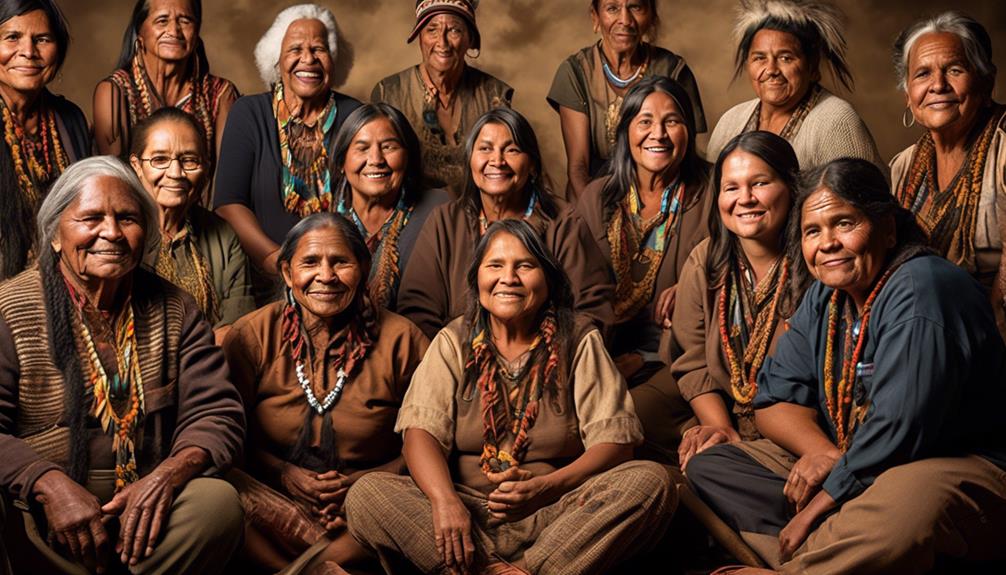
Do you believe that acquiring a new language is difficult? Consider the monumental task of safeguarding an indigenous language teetering on the edge of disappearing. This endeavor goes beyond mere challenge; it’s a vital undertaking passionately pursued by Indigenous Australian language practitioners.
The journey of these language workers is a testament to resilience, perseverance, and the profound significance of linguistic diversity. As we navigate through the complexities and triumphs of their efforts, we gain insight into the multifaceted strategies and collaborative endeavors that are shaping the future of Indigenous Australian languages.
But what are the specific skills and approaches necessary for this monumental task? Stay tuned to uncover the transformative journey of Indigenous Australian language workers and the invaluable lessons they offer for language preservation.
Key Takeaways
- Aboriginal languages are repositories of cultural knowledge, traditions, and identity for First Nations peoples.
- Historical policies and forced assimilation have contributed to the decline of Aboriginal languages.
- Limited resources and intergenerational language transmission pose challenges to language revitalization.
- Language preservation is rooted in community-led initiatives and partnerships with educators and elders.
Historical Context of Indigenous Australian Languages
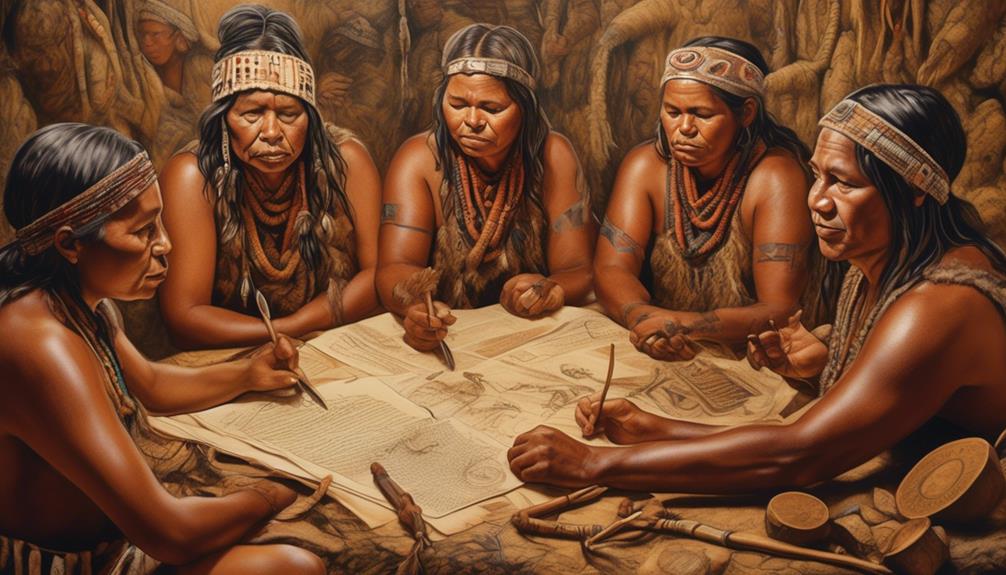
The historical significance of Aboriginal languages in Australia's cultural heritage can't be overstated. These languages aren't just a means of communication; they're repositories of cultural knowledge, traditions, and identity for First Nations peoples.
However, historical policies and forced assimilation have significantly contributed to the decline of Aboriginal languages. This has had a profound impact on Indigenous communities and their sense of self-determination. The loss of language has severed connections to traditional practices and spiritual beliefs, leading to a decline in overall well-being.
Despite this, there's a growing movement towards language revival, driven by the recognition of the vital link between Indigenous languages and the cultural and social vitality of First Nations peoples. Collaboration between Indigenous communities, linguists, and educational institutions is playing a pivotal role in this revitalization effort, empowering language speakers to reclaim and preserve their linguistic heritage.
The reclaiming of Indigenous languages isn't just about words; it's about reclaiming pride, resilience, and the right to uphold one's cultural legacy.
Challenges Faced by Language Workers
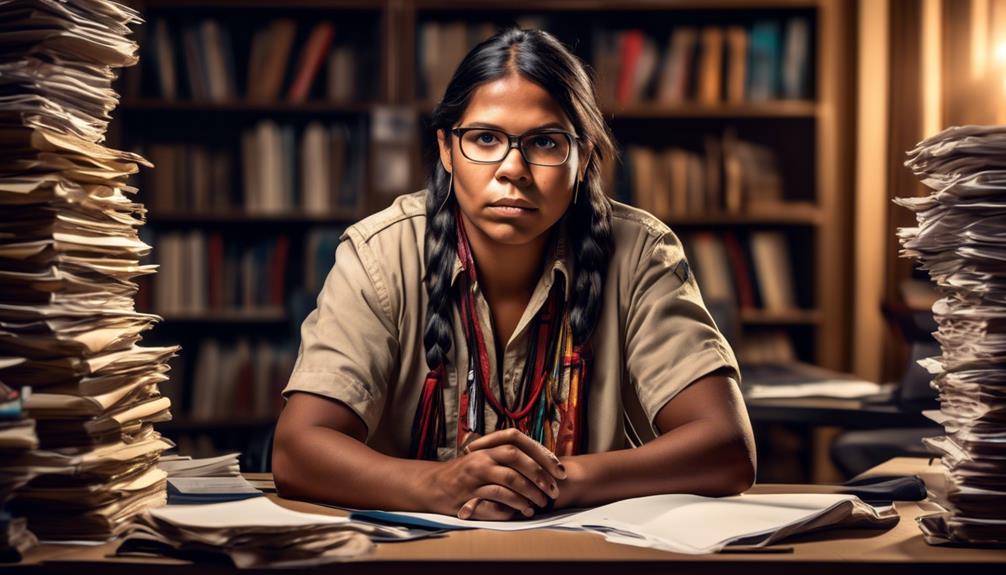
Facing the challenges of limited resources and intergenerational language transmission, we engage in the crucial work of revitalizing Indigenous Australian languages. The scarcity of funding and resources presents a significant obstacle to our efforts in preserving Aboriginal languages. Without adequate support, it becomes increasingly challenging to develop and implement effective language revitalization programs. Additionally, the limited number of fluent speakers and the lack of intergenerational transmission further compound the difficulties faced by language workers. The historical policies of forced assimilation have also played a detrimental role in the decline of Indigenous languages, making the task of language preservation even more daunting.
Collaboration between Indigenous communities, linguists, and educational institutions is essential to address these challenges and ensure the successful revitalization of Aboriginal languages. However, the urgency of the situation is undeniable, as many Indigenous languages are endangered or have already become extinct. As language workers, our commitment to preserving Indigenous languages is driven by the desire to safeguard the cultural heritage and knowledge passed down through generations for the benefit of future generations. The challenges we confront underscore the pressing need for sustained support and collaborative efforts in the vital work of Aboriginal language preservation.
Strategies for Language Preservation
Collaborating with Indigenous communities and linguists, we implement innovative strategies to preserve and revitalize Aboriginal languages, ensuring the transmission of cultural knowledge and identity.
Our approach to language preservation is rooted in community-led initiatives and partnerships with educators and elders.
To engage the audience, we focus on two key strategies:
- Bilingual Education Programs
- Collaborate with Indigenous educators to integrate Aboriginal languages into mainstream education curricula.
- Empower Indigenous youth to become language advocates and ambassadors within their communities.
- Community-Led Language Revitalization
- Work closely with elders to document traditional knowledge and oral histories in Aboriginal languages.
- Support the creation of language nests and immersion programs to foster intergenerational language transmission.
Impact and Benefits of Language Revitalization
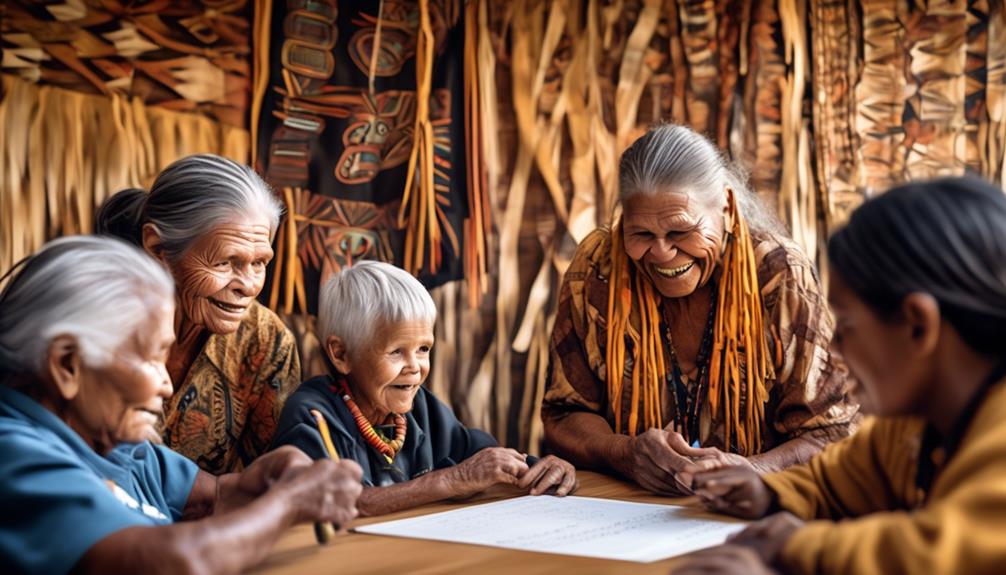
How does the revival of Aboriginal languages impact the well-being and self-determination of Indigenous communities? The impact of language revitalization extends far beyond the preservation of words and grammar. It directly influences the overall health and empowerment of Indigenous peoples. When Indigenous languages are revitalized, there is a profound sense of cultural pride and identity that emerges within the community. This revitalization supports the mental, emotional, and spiritual well-being of individuals, helping to heal historical trauma and strengthen community bonds. Furthermore, the revival of Aboriginal languages contributes to the self-determination of Indigenous communities, enabling them to assert their cultural autonomy and sovereignty.
| Impact | Benefits | Language Revitalization |
|---|---|---|
| Cultural Pride | Healing historical trauma | Preservation of traditional knowledge |
| Identity | Strengthening community bonds | Empowerment of Indigenous communities |
| Autonomy | Mental, emotional, and spiritual well-being | Assertion of cultural autonomy |
The impact and benefits of language revitalization are profound and multifaceted. By prioritizing the preservation and revival of Indigenous languages, we are not only honoring the cultural heritage of First Nations peoples but also fostering their overall well-being and self-determination.
Resources and Support for Language Workers
We actively seek out community-led language revitalization programs and initiatives to provide essential support and guidance for language workers. By engaging with these programs, we can access valuable resources and expertise to aid in our language preservation efforts.
In addition to community-led initiatives, we also utilize technology, such as language apps and online resources, to support our language learning and preservation endeavors. These tools enable us to reach a wider audience and facilitate the accessibility of Indigenous Australian languages.
Furthermore, we collaborate with linguists, educators, and Indigenous communities to gain valuable insights and expertise in language preservation and revival. Their support and guidance are instrumental in our efforts to sustain and revitalize endangered languages.
Moreover, we actively seek government support and recognition, as these are essential for sustaining language revitalization efforts. By seeking out available resources and funding opportunities, we can ensure the longevity of our language preservation initiatives.
Documenting and recording endangered languages are also crucial aspects of our efforts to preserve and revitalize Aboriginal languages, and we're dedicated to this important work.
Frequently Asked Questions
Why It Has Been Difficult to Retain Aboriginal Languages in Australia?
It's been tough to retain Aboriginal languages in Australia due to a range of challenges.
Government policies like cultural assimilation and limited support have hindered preservation efforts. The education system hasn't prioritized Indigenous languages, leading to a lack of intergenerational transmission.
However, community engagement and collaboration between Indigenous communities, linguists, and educational institutions are crucial for language revitalization. These efforts aim to address the historical and systemic barriers to preserving Aboriginal languages.
What Is Being Done to Preserve Indigenous Languages?
We're actively engaging in language revitalization through community-driven initiatives. By integrating technology and honoring storytelling traditions, we're preserving Indigenous languages.
Educational programs are crucial, and collaboration between communities, linguists, and institutions is key.
Symbolically, we're sowing seeds of cultural preservation, nurturing our languages with care.
Together, we're building a future where our languages thrive, ensuring the rich tapestry of Indigenous voices endures for generations to come.
Why the Preservation of Indigenous Culture Including Language Is Important?
Preserving Indigenous culture, including language, is crucial for maintaining cultural identity, connection, and revitalization across generations. It fosters empowerment, oral tradition, and education while promoting linguistic diversity.
Community support is essential in this endeavor, as it contributes to the overall well-being of Indigenous communities. By preserving Indigenous languages, we honor traditional knowledge and stories, combat the loss of cultural traditions, and promote cultural diversity and understanding.
Why Is It Important to Preserve the Aboriginal Language?
Preserving Aboriginal languages is crucial for maintaining our cultural identity, strengthening community connection, and preserving linguistic diversity.
It's essential for passing down our oral tradition and ensuring that educational resources reflect our heritage.
Reviving and preserving our languages empowers our communities and contributes to our overall well-being and self-determination.
Understanding Aboriginal languages enables a deeper appreciation of our profound connection to the land.
Conclusion
As language workers, we've embarked on a journey to breathe life back into our Indigenous Australian languages. Like gardeners tending to delicate, rare flowers, we nurture and protect our languages from extinction.
Despite the challenges, we've developed strategies and found support to ensure the survival of our linguistic heritage.
The impact of language revitalization is like a colorful tapestry, weaving together our cultural identity and well-being, enriching the fabric of our communities for generations to come.
Mary is a passionate writer who brings creativity and a fresh perspective to our team. Her words have the power to captivate and inspire, making her an essential contributor to our content. Mary’s commitment to storytelling and dedication to promoting Indigenous culture ensures that her work touches the hearts of our readers. We’re fortunate to have her as part of our team.
-

 Culture1 month ago
Culture1 month agoUnderstanding Aboriginal Totem Significance
-

 Torres Strait Islanders4 weeks ago
Torres Strait Islanders4 weeks agoSacred Healing: Discovering Indigenous Health Secrets
-

 Torres Strait Islanders4 weeks ago
Torres Strait Islanders4 weeks agoCultural Vitality: Indigenous Health Tips
-

 Torres Strait Islanders4 weeks ago
Torres Strait Islanders4 weeks agoEmbrace Indigenous Wisdom: Top Well-Being Products
-

 Torres Strait Islanders4 weeks ago
Torres Strait Islanders4 weeks agoHolistic Health: Indigenous Wellness Explored
-

 Torres Strait Islanders4 weeks ago
Torres Strait Islanders4 weeks agoIndigenous Health Products Guide for Wellness
-

 Torres Strait Islanders4 weeks ago
Torres Strait Islanders4 weeks agoHealing from the Heart: Indigenous Wellness Goods
-

 Torres Strait Islanders4 weeks ago
Torres Strait Islanders4 weeks agoNature’s Wisdom: Indigenous Well-Being Remedies
















